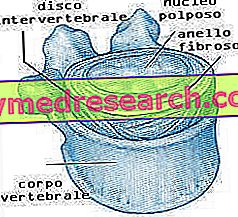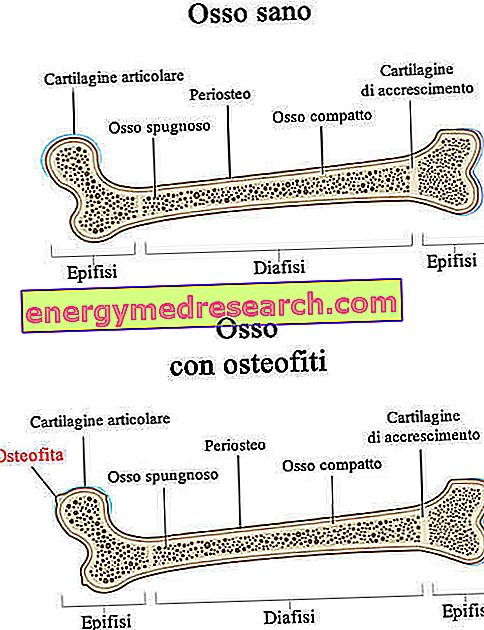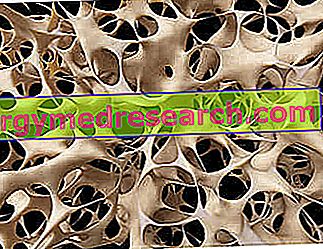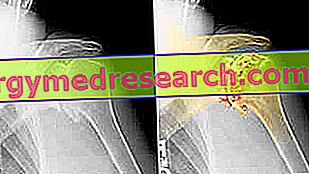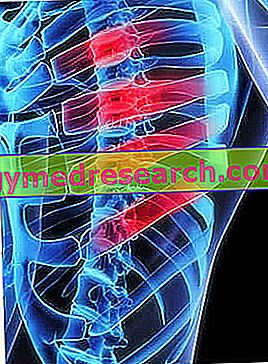Generality The term hernia indicates the escape of a viscus (that is of an internal organ in a body cavity) or of part of it from the natural cavity that normally contains it. Specifically, the term herniated disc indicates the leakage of material from the nucleus pulposus of the intervertebral disc, caused by the breakage of the fibers of the fibrous ring that form the disc wall
Category bone health
Generality Osteophytosis is the process of formation of osteophytes at the skeletal level. Similar to a rose thorn, a beak or a claw, osteophytes are small bony growths, which develop on the articular surfaces of bones subjected to erosive and irritative processes with a chronic character. Osteophytosis mainly affects the bony portions that make up the knee joint, the hip joint, the joints of the spine, the shoulder joint and the joints of the fingers of the hand
Generality Osteopenia is a systemic condition of the skeleton, characterized by a reduction in bone mineral density values (BDM) less severe than that which can be observed in the presence of osteoporosis. Various factors can cause the reduction of BDM, including: advanced age, a particular family predisposition to disorders such as osteopenia or osteoporosis, cigarette smoking, alcohol abuse, a drop in estrogen ( in women) or testosterone (in humans), anorexia nervosa, poor exercise, the intake of certain drugs (chemotherapy or corticosteroids), an incomplete diet, food-related disorders, et
Generality The osteoid osteoma is a benign bone tumor that has the peculiarity of deriving from osteoblasts. Due to causes still unknown, the osteoid osteoma affects, mainly, the long bones of the limbs (femur, humerus, tibia, etc.) and, although to a lesser extent than in the case just mentioned, the vertebrae of the vertebral column (in particular the cervical vertebrae and lumbar vertebrae)
Generality Osteonecrosis means death of bone. Contrary to what many believe, bone is a living tissue that needs blood and oxygen; if these fail, the cells that compose it undergo premature death and osteonecrosis occurs. Figure: X-ray of the shoulder joint; in the image to the right the process of osteonecrosis affecting the head of the humerus and the glenoid cavity of the scapula is evident
Generality Spondylodiscitis is the simultaneous infection of one or more intervertebral discs (discite) and one or more vertebrae (spondylitis). Spondylodiscite causes inflammation and deterioration of the spinal components involved. Spondylodiscite is mostly due to bacteria (in particular, we note the gram-positive and gram-negative pyogenic, and Mycobacterium tuberculosis ); however, it can also be the consequence of fungal or parasitic contamination
Generality Tecartherapy , also known as Tecar , is an electro-medical treatment, which allows a faster recovery from traumas and inflammatory pathologies of the musculoskeletal system. Widespread above all in the physiotherapy field, the Tecar involves the use of a very particular device, based on the physical principle of the condenser and capable of generating heat within the anatomical area in need of treatment
Generality Trochanteritis is the inflammation of the characteristic synovial bursae located superiorly to the great trochanter of the femur, to protect the tendons which are inserted at the level of the latter. Acute traumas and chronic repetitive-type hip traumas can cause trochanteritis. The presence of trochanteritis produces, at the hip, symptoms and signs, such as: pain, swelling, a sense of stiffness, redness, heat and soreness
Generality Costal volet is a potentially lethal medical condition, characterized by the paradoxical movement of a group of at least three ribs that have suffered a fracture in at least two distinct points. The peculiarities of this paradoxical movement can be observed during the respiratory act. In the inspiratory phase, while the rib cage expands, the group of ribs (called "segment") moves towards the inside, crushing the adjacent lung; in the expiratory phase, instead, while the thoracic cage is reduced in terms of volume, the segment tends to move outwards
Definition The ankylosis consists in the partial or total limitation of the movements of a joint. This symptom can result from various pathological processes. Most often, the ankylosis is the consequence of an articular traumatism (fracture) or of an inflammation (acute or chronic arthritis). Possible favoring conditions include advanced age, prolonged immobility of the limb, degeneration of joint tissues and some general diseases, such as gout and rheumatoid arthritis
Related articles: Psoriatic arthritis Definition Psoriatic arthritis is a chronic disease characterized by joint inflammation that occurs in people with psoriasis. The exact etiology and pathophysiology are still unknown, however some factors that may predispose to the disorder have been identified. In particular, the risk of developing this form of arthritis is greater if the subject is familiar with the disease (so if it is genetically predisposed), if the psoriasis is extensive and also localized to the nails or if the HLA-B27 antigen is present ( or other specific alleles)

